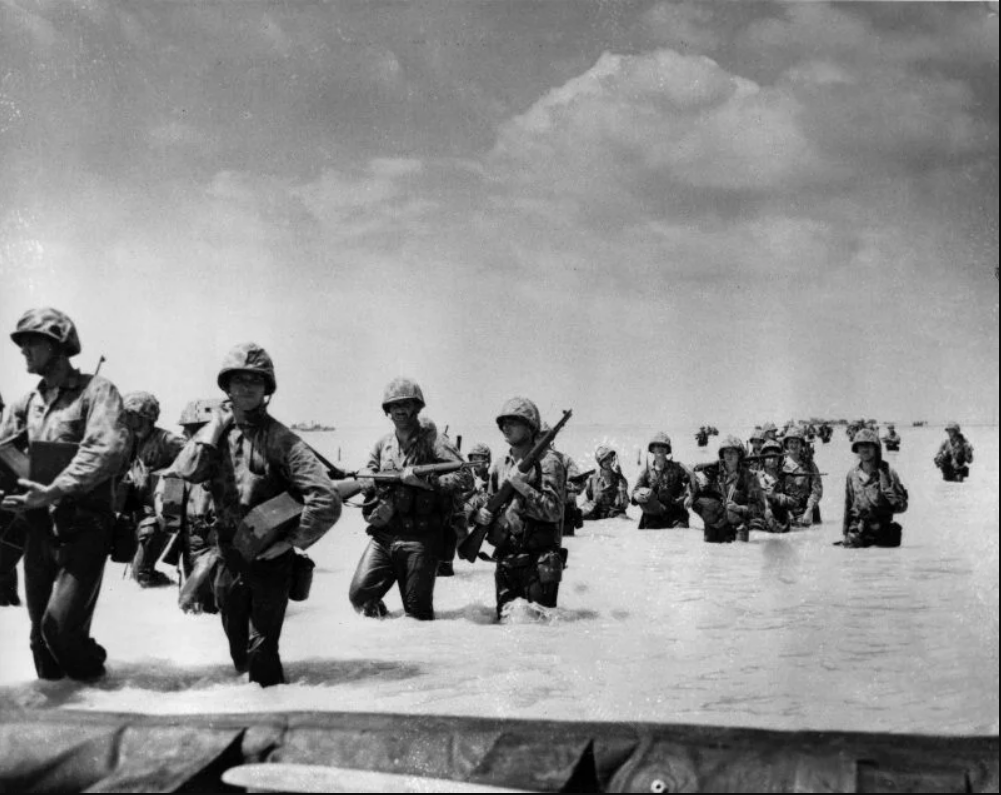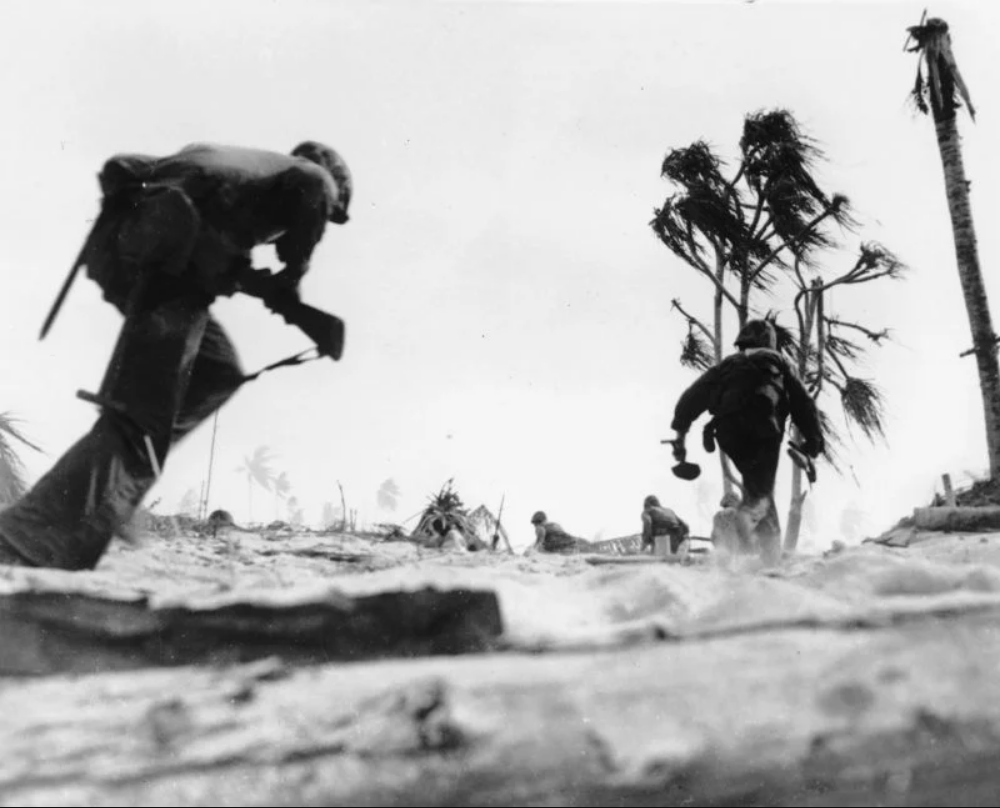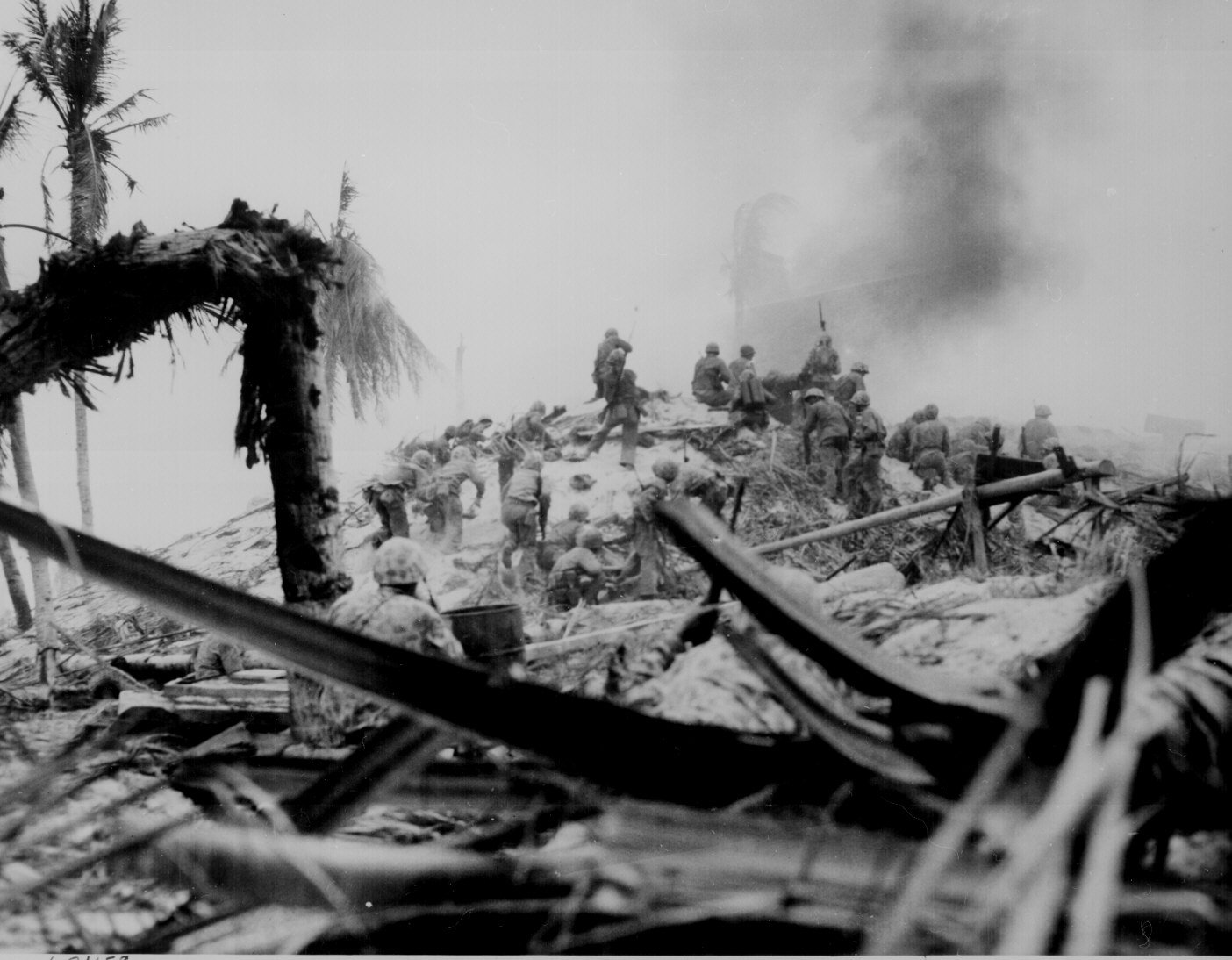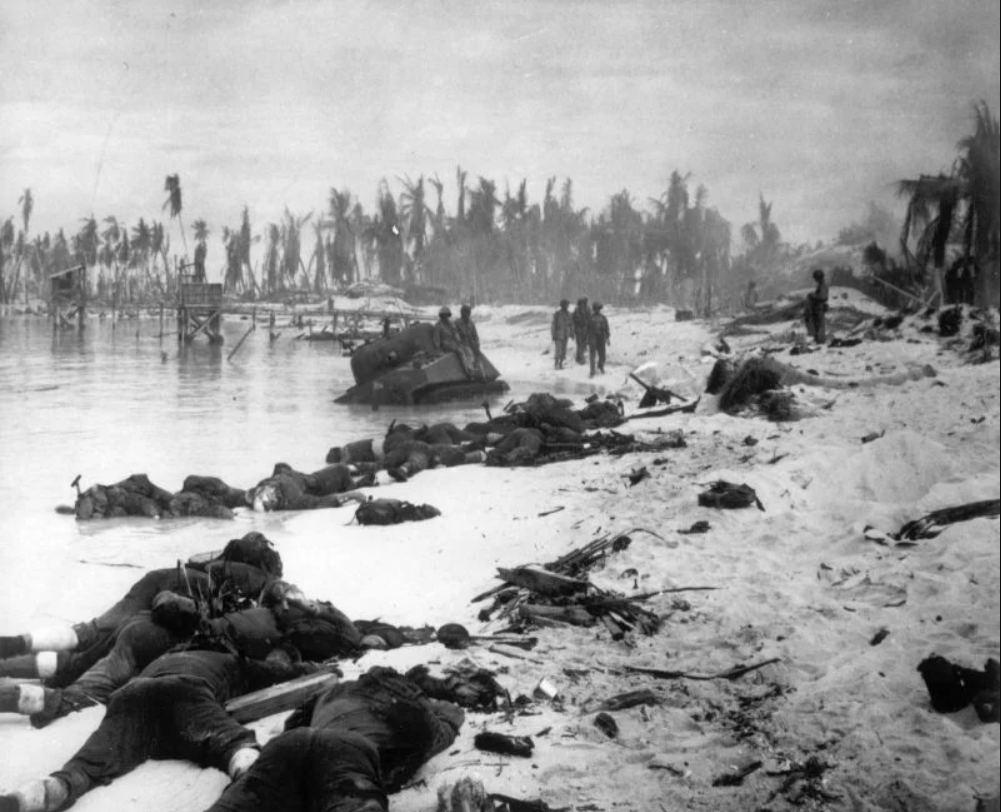In November 1943, the United States launched a major offensive against Japan. They planned to advance to the Philippines and to oust the Japanese army from the islands. But Japan occupied countless islands in the Pacific and was very difficult to beat. In order to conquer the islands, the Americans came up with a strategy they called leapfrogging. They did not attack the most important or best defended islands, but the islands surrounding them. This way, they were able to isolate the Japanese units and cut them off from their supply lines, without losing much time or troops in combat.
The attack began on the Gilbert Islands between Hawaii and Papua New Guinea. On 20 November, the American fleet started shelling Tarawa, one of the islands. Initially, it was hard going. The Japanese were prepared for an invasion and had deployed additional troops. Due to the low tide, the American landing ships could not get close enough to the beach and the soldiers had to wade through the water. In the afternoon, the Americans managed to land in several places. After that, the Japanese started losing ground, and on 23 November, the Americans had won the battle.
The Americans lost 1700 men. Nearly 4700 Japanese soldiers died. They fought to the death. Only 17 of them were made prisoners of war.



